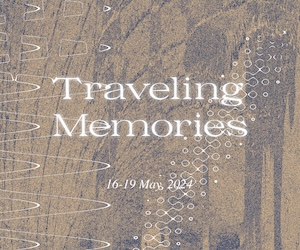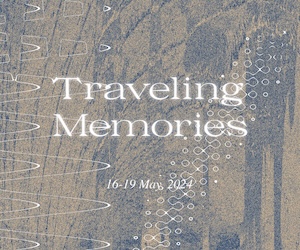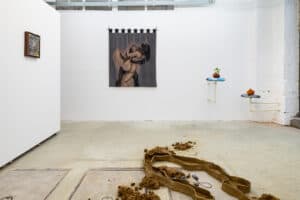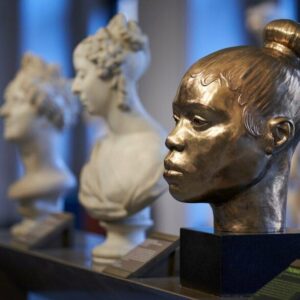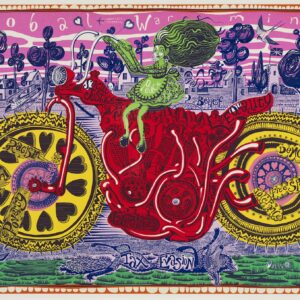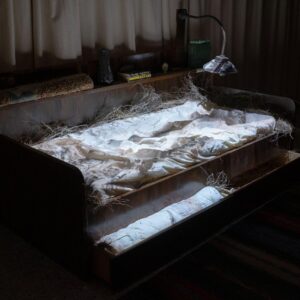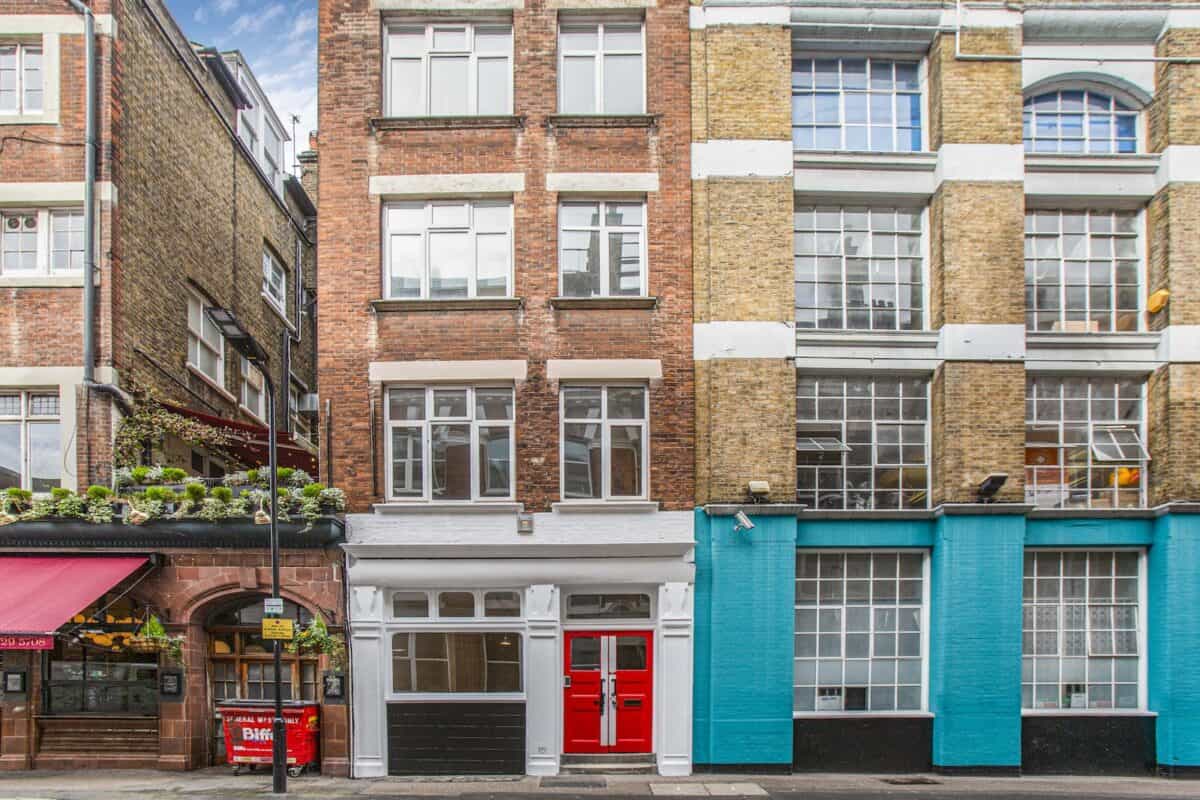
Kupfer to open a new art space in Shoreditch, the inaugural exhibition is a group exhibition ‘Allow Cookies’ that brings together young and emerging artists whose works examine the tension between desire and manipulation.
The exhibition presents new and recent work by eleven UK-based artists who draw variously from pop culture, advertising, pornography, cartoons, luxury goods and fashion. Featuring painting, photography, and sculpture, each of the works toy with the (sometimes guilty, sometimes gleeful) sense of complicity in the magnetic pull of consumerism that defines contemporary life.
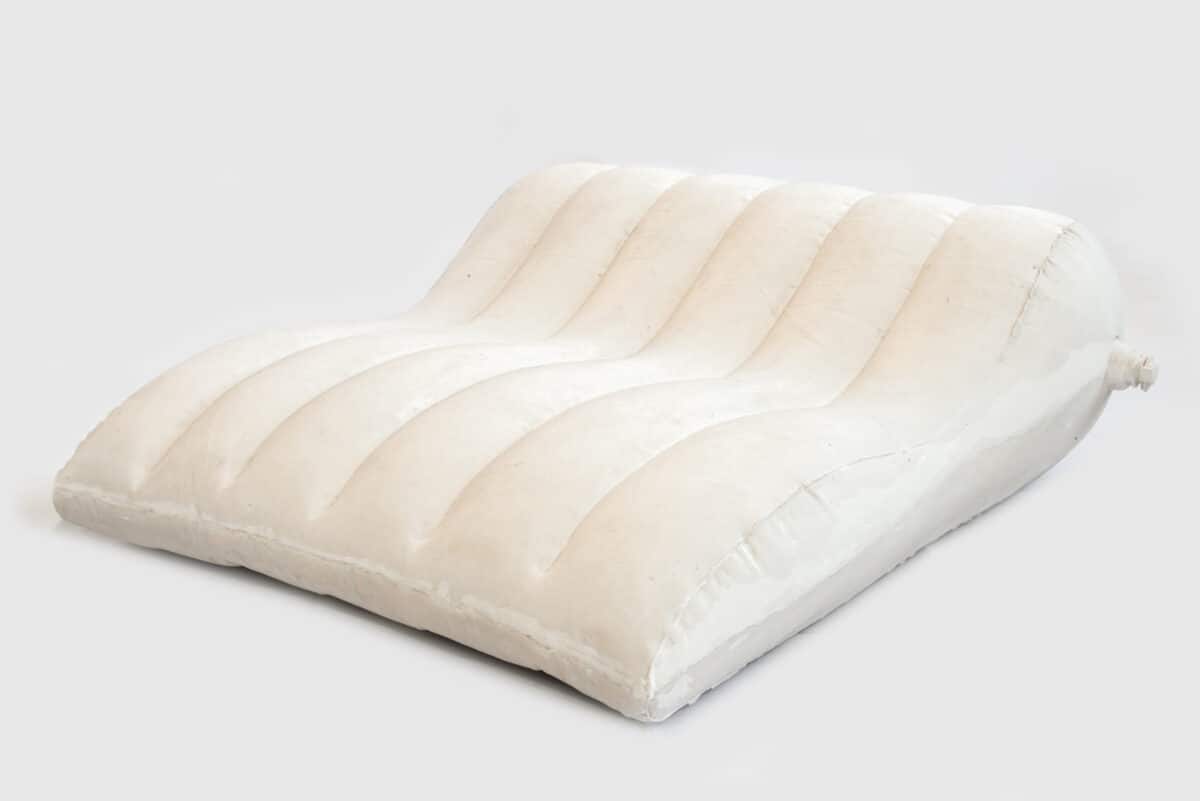
The works on view both critique and shamelessly partake in a visual language of seduction. Centred on the exchange and mediation of subcultural ephemera, Laila Majid & Louis Blue Newby’s collaborative practice draws from found imagery of body modification, fetish culture, glamour magazines and pornography to explore image consumption and tease a psychosis of desire. Barbie pink, glitter and synthetic sugar feature throughout Anya Gorkova’s compositions, which playfully encapsulate longing, shame and power in queer consciousness.
Evocative of the stars on the Hollywood Walk of Fame, Dani Marcel’s work questions the seduction of success and the machinations of the art world. His polished paintings exhibit a consciousness of how both a viewer – and an artist’s – status is controlled by subtle systems of exchange.
By taking on the role of manipulator and/or knowingly commenting on their own drive towards and experiences of manipulation, the artists in the show share an interest in the ethical and often surreal outcomes of worldbuilding within these parameters. Often these influences are biassed and inept, a concept Woodsy Bransfield attributed him a particular social status, his work questions the aspirations, dreams and material signifiers of class, as well as the targeted adverts that feed them.
Ana Viktoria Dzinic’s shapeshifting practice is concerned with mapping, archiving and contextualising image making in a post-photographic landscape. Her work manifests fantasy realities by using consumer technologies, obfuscating the role of the artist by rendering personal archival photographs on canvas using a digital ‘painting’ filter. Sofia Hallström builds textured layers of detail with paint and found materials; her compositions forming glitchy, self-contained worlds, abstractly mapping the uncharted territories of the mind and its psychic potential. Exhibited for the first time, firpal’s digitally-rendered works synthesise traditional Punjabi drawing and histories of representative painting with the unpredictable, beautiful possibilities of digital graphics. While some works depict recognisable and worldly phenomena like flora and fauna, others hint at the artist’s speculative worldbuilding; for instance, two chimeric gargoyles at home in surreal, Art Deco surrounds.
Humour and cuteness are two dominant qualities of consumer culture, as theorist Sianne Ngai
observed;
when harnessed in the representation of darker themes and the communication of complex emotions, these powerful concepts can subvert conventional ideas about value and material desire. Transforming functional objects into artwork
Sianne Ngai, Our Aesthetic Categories: Zany, Cute, Interesting, Harvard University Press: 201
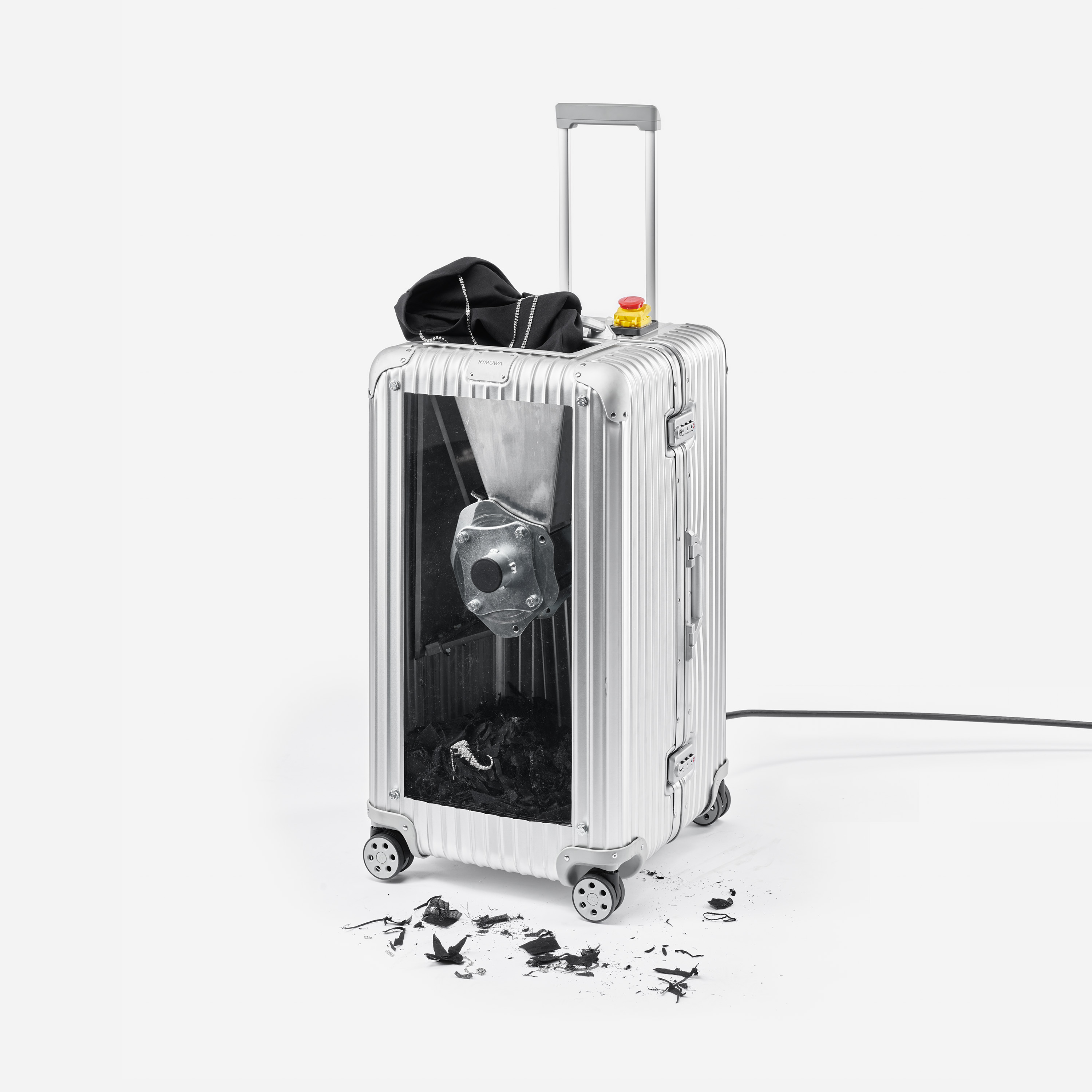
Hongxi Li takes the iconic stealth-wealth Rimowa suitcase as her muse, repurposing the luxury item into a kinetic sculptural assemblage and performance piece, questioning the value of branding and materiality while exploiting the potential of the everyday. Geo Stuart’s witty collages employ cuteness and humour through repetition, drawing characterful personalities out of everyday objects. Combining pareidolic imagery with AI generators, Stuart’s process positions the artist as manipulator, questioning sincerity, honesty and purity in form and intent.

Waj Hussain applies the William S. Burroughs-esque literary technique of the ‘cut-up’ to art-making, using explicit text from classified ads in gay magazines from the 70s and 80s to make reference to shared humour within queer subcultures. Working with imagery associated with underground activities, Hussain deviously toys with the humourless ‘high culture’ gaze associated with a gallery-going viewership.
Bringing many artists into conversation for the first time, Allow Cookies seeks to illuminate how a subversive new generation of artists are dissecting the interplay and tension between the confusing, chaotic, but undoubtedly alluring signs and symbols that define our visual experience. Writing on the fluidity and constant production of culture under globalisation, Byung-Chul Han writes that
‘forgeries seamlessly combine with genuine articles, thus sublating fake and genuine into a third category of Being, into hyperreality.’
Byung-Chul Han, Hyperculture, Polity: 2022
It is this uncanny slippage, and the inherent seductive possibilities it offers, that the artists in this exhibition seek to dissect. Often humorous, playfully opaque, or filled with longing, each artist’s work exhibits a wry self-awareness of the power dynamics of the current moment – in art and in wider cultural production. But if one takeaway sticks: it’s always a good idea to delete your cookies.
Allow Cookies at Kupfer, Woodsy Bransfield, Ana Viktoria Dzinic, Anya Gorkova, Sofia Hallström, Waj Hussain, firpal, Hongxi Li, Dani Marcel, Geo Stuart, Louis Blue Newby & Laila Majid. Friday 14th July – Saturday 29th July, 2023 Opening: Thursday 13th July, 6–9pm
Curated by Laurie Barron, Isabel Davies & Isabel Walter
Laurie Barron, Isabel Davies & Isabel Walter are writers and curators with a collaborative practice, based in London.
Kupfer is a project space that functions as a platform for exhibitions and residencies. Opened in 2017, Kupfer has showcased the work of nearly 100 artists from different generations and geographies with a focus on those who are underrepresented in the London art circuit. In July 2023, Kupfer moves to a new townhouse location, at 3 Scrutton Street in the heart of Shoreditch, which will allow for an expanded residency and education programme. Kupfer believes that art education and support should be accessible to all. In July, Kupfer launches a campaign to raise funds to support the continuation and growth of their residencies and educational programme into next year. Rewards include but are not limited to, workshops, tutorials, curator-led talks, and artworks by artists they have collaborated with. The campaign will be announced on Kupfer’s Instagram (@kupferproject). Keep an eye out! kupfer.co/
